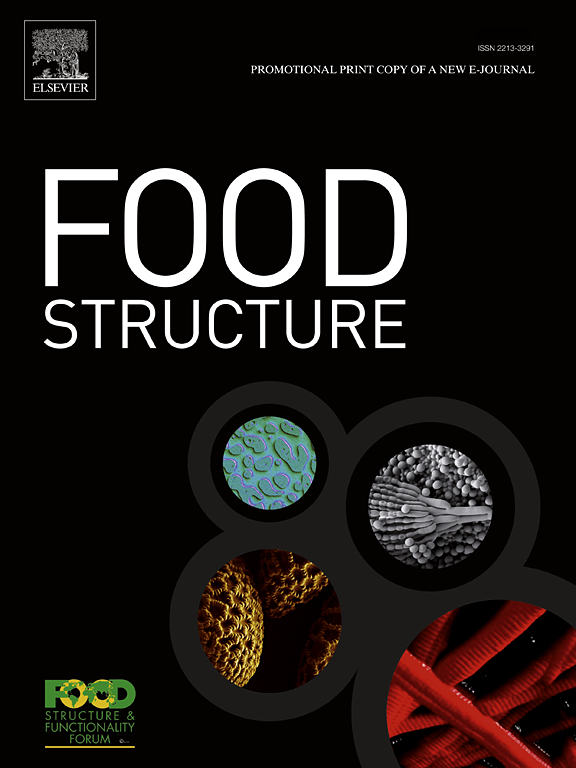再生鱼油和猪油:对鱼糜凝胶的质地和结构特性的影响
IF 5.6
3区 农林科学
Q1 FOOD SCIENCE & TECHNOLOGY
引用次数: 0
摘要
这项研究考察了使用回收鱼油(FO)和猪油(LA)对鱼糜凝胶特性的影响和机制。研究考察了鱼糜凝胶特性、水分分布和微观结构在不同鱼油和猪油添加量下的变化。在鱼糜凝胶中添加 FO 和 LA 会降低纹理特性和凝胶强度,同时提高持水量(WHC)和白度。FO 组和 LA 组的 G' 值和 G′' 值均低于对照组,其中 LA 组的 G′ 值高于 FO 组。微观结构分析表明,LA 组的油滴形状不规则,颗粒尺寸较大。相比之下,FO 在鱼糜凝胶网络中的分布更为均匀。结果表明,油的变化会影响鱼糜凝胶的结构和理化性质。此外,与 LA 相比,FO 对鱼糜凝胶网络的影响较小,并能保持优越的凝胶特性。这表明,FO 可以成为生产营养丰富的鱼糜产品的重要配料。本文章由计算机程序翻译,如有差异,请以英文原文为准。
Recycled fish oil and lard: Influences on the textural and structural properties of Surimi Gels
This study examined the impact and mechanisms of using recycled fish oil (FO) and lard (LA) regarding the gel characteristics of surimi. It examined changes in surimi gel properties, moisture distribution, and microstructure with varying additions of FO and LA. Adding FO and LA to surimi gels reduced textural properties and gel strength, while increasing water-holding capacity (WHC), and whiteness. The FO and LA groups' G' and G′' values were lower than those of the control group, with the LA group exhibiting a higher G′ value than the FO group. Microstructural analysis showed that the oil droplets of LA group were shaped irregularly and had larger particle sizes. In contrast, the FO was more uniformly distributed within the surimi gel network. Results showed that oil changes affect the structural and physicochemical properties of surimi gels. Furthermore, FO exerted a milder impact on the surimi gel network and preserved superior gel properties compared to LA. This suggests that FO could be a valuable ingredient for producing nutrient-enriched surimi-based products.
求助全文
通过发布文献求助,成功后即可免费获取论文全文。
去求助
来源期刊

Food Structure-Netherlands
Chemical Engineering-Bioengineering
CiteScore
7.20
自引率
0.00%
发文量
48
期刊介绍:
Food Structure is the premier international forum devoted to the publication of high-quality original research on food structure. The focus of this journal is on food structure in the context of its relationship with molecular composition, processing and macroscopic properties (e.g., shelf stability, sensory properties, etc.). Manuscripts that only report qualitative findings and micrographs and that lack sound hypothesis-driven, quantitative structure-function research are not accepted. Significance of the research findings for the food science community and/or industry must also be highlighted.
 求助内容:
求助内容: 应助结果提醒方式:
应助结果提醒方式:


